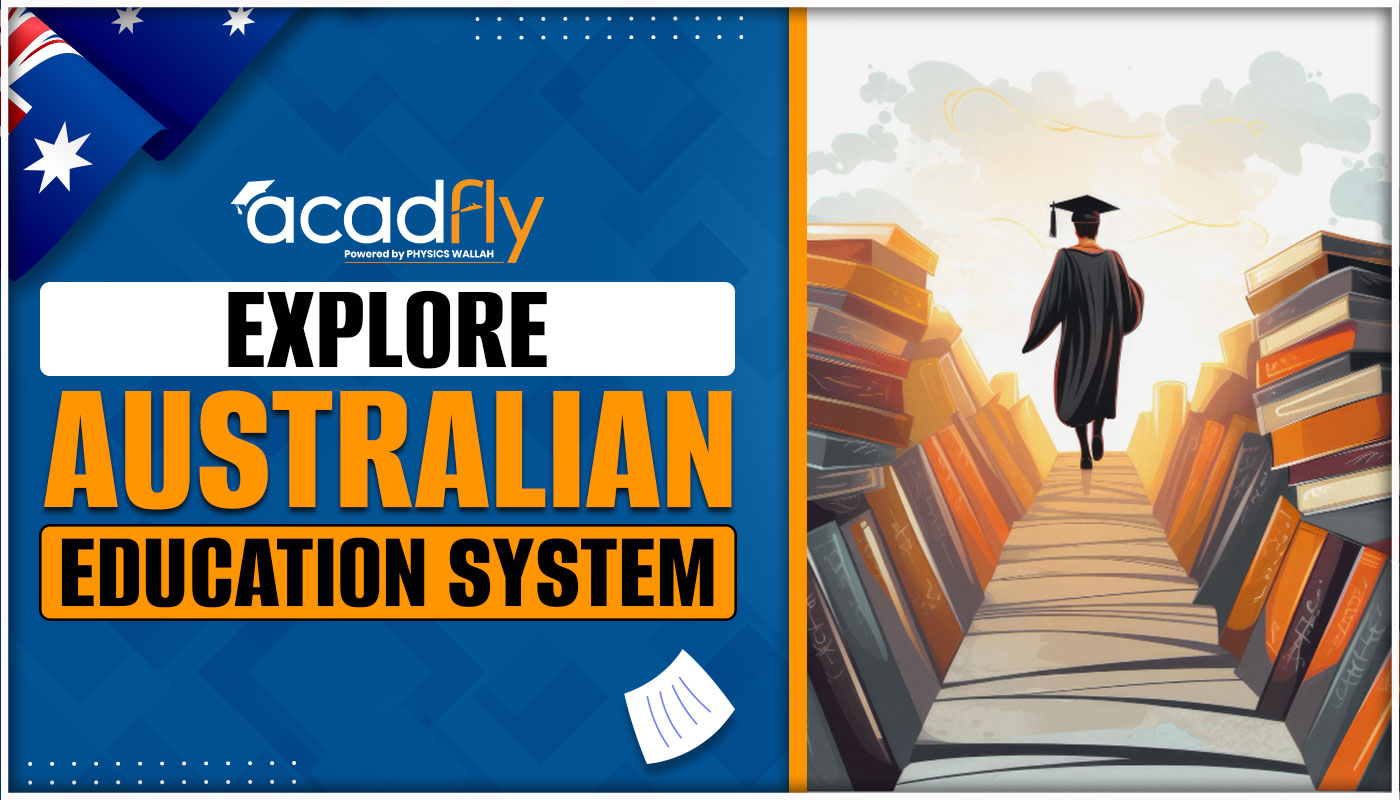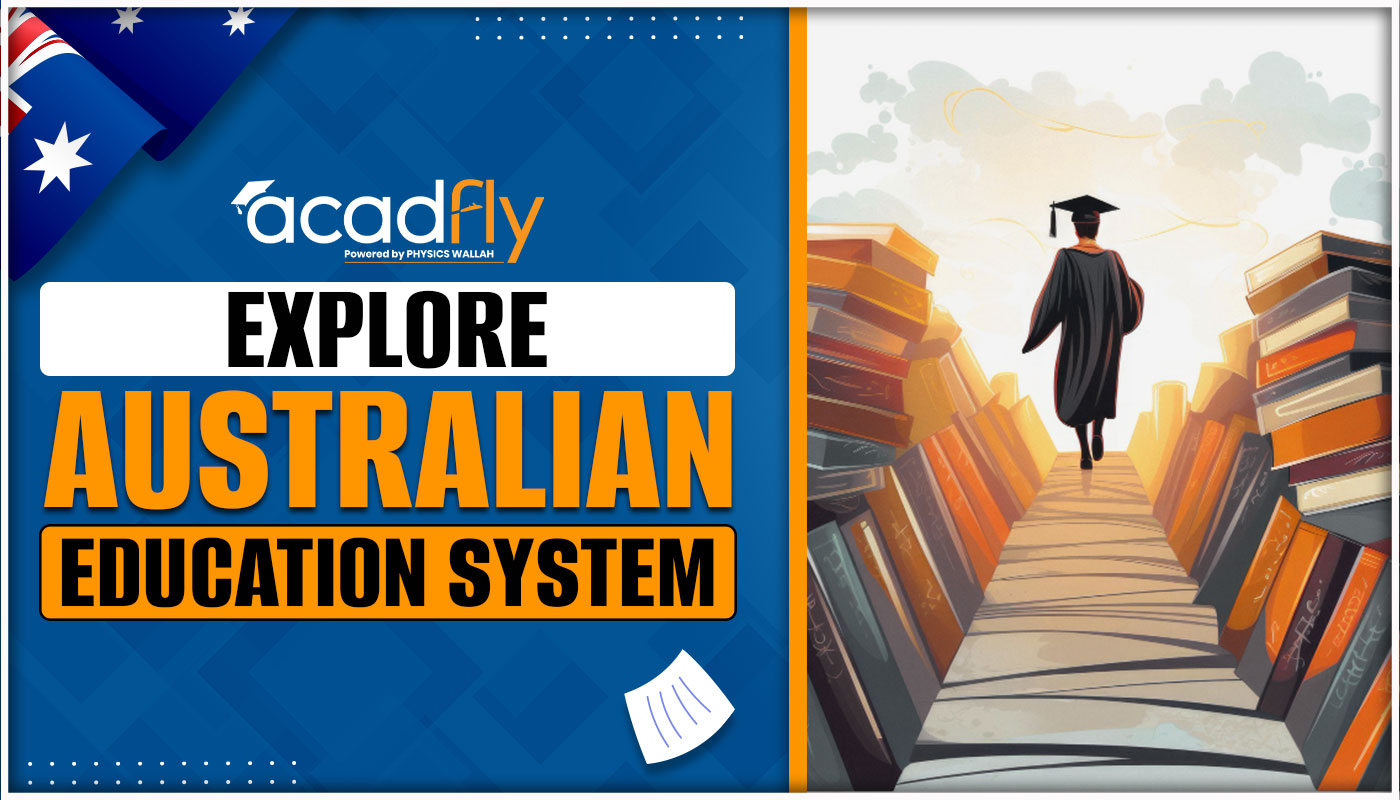


Australian Education System: The Australian education system is renowned worldwide for its high standards, comprehensive curriculum, and its ability to cater to both domestic and international students. Known for promoting innovation, creativity, and critical thinking, Australia is a top destination for those looking to study abroad.
This blog post will explore the multifaceted education system of Australia, its history, interesting facts, and the structure of its educational stages, while also providing insights into undergraduate and postgraduate studies. Finally, we'll look at the current educational policies shaping this vibrant educational landscape.
Explore Australian Education System Overview
The Australian education system offers a diverse range of options across its multiple stages—from early childhood to higher education. Governed by both state and federal policies, it ensures that standards of education remain consistently high across all regions.
This system is divided into public, Catholic, and independent sectors, with government schools being the most prevalent. Australia’s commitment to educational excellence is evident in its significant investment in educational infrastructure and its progressive educational policies that cater to a variety of learning styles and needs.
This commitment to education is also a major draw for international students, making Australia the third-largest destination for overseas education. The supportive academic environment, advanced research facilities, and opportunities to engage with leading academics make Australia a prime choice for students from around the globe looking to study abroad.
|
Explore Australian Education System Overview |
|
|
Parameter |
Details |
|
Country Name |
Australia |
|
Population (2023 est.) |
Approximately 26 million |
|
Literacy Rate |
About 99% of adults |
|
Official Language |
English |
|
GDP (2022) |
Approx. USD 1.5 trillion |
|
GDP per capita (2022) |
Approx. USD 58,000 |
|
Major Cities |
Sydney, Melbourne, Brisbane, Perth, Adelaide |
|
Education Budget (2021-2022) |
AUD 24.4 billion |
|
Top Universities |
University of Sydney, University of Melbourne, Monash University |
|
Percentage of GDP spent on education |
Around 5% |
|
International Students (2020) |
Over 700,000 |
|
Key Education Export Value (2020) |
AUD 19.9 billion |
Australian Education System History
Indigenous Education: Aboriginal methods of learning included oral teachings of spiritual and cultural practices essential for survival within their communities.
Colonial Beginnings (1787): Education in Australia began to formalize with the arrival of the First Fleet, which marked the start of non-Indigenous education influenced by English and Anglican Church philosophies.
19th Century Expansion: The century saw the establishment of the first religious schools and universities in Sydney and Melbourne, reflecting the diverse beliefs of the population.
20th Century Accessibility: Education became more accessible, with policies aimed at extending schooling to all members of society, regardless of social standing.
21st Century Innovations: Recent decades have focused on inclusivity and accessibility, with significant advancements in secondary and tertiary education, ensuring that Australia remains a leader in global education.
Compulsory Education: Education in Australia is compulsory between the ages of 6 and 17, typically covering primary and secondary education. This compulsory education ensures that all children have access to a basic level of education, which is fundamental to fostering a literate and skilled population.
Educational Sectors: The education system is segmented into three main sectors: public (government) schools, Catholic schools, and independent (private) schools. As of 2020, public schools accounted for about 65.6% of all student enrolments, followed by Catholic schools at 19.4%, and independent schools at 15%.
Focus on International Education: Australia is a leading destination for international students, being the third-largest in the world. The high quality of education and the multicultural environment make it a popular choice for students looking to study abroad. This sector contributes significantly to Australia's economy, with expectations of growth in the coming years.
Technological Integration in Education: Australia is keen on integrating technology within its education system, enhancing digital literacy and online learning capabilities. This shift was accelerated by the COVID-19 pandemic, which led to an increased focus on blended and online learning models.
Educational Leadership and Policy: Recent policies focus on inclusivity and high-quality education for all students, including major strategies like the National School Reform Agreement. This agreement between the Commonwealth and state/territory governments aims to lift educational outcomes across all schools and for all students.
Support for Indigenous and Disadvantaged Students: Australia places a strong emphasis on increasing educational attainment among Aboriginal and Torres Strait Islander peoples and supports students from disadvantaged backgrounds through various programs. These initiatives are part of broader government efforts to close the educational gap and provide equitable education opportunities for all.
Adult Education: The system also addresses lifelong learning through adult education programs, which are designed to help adults re-enter the education system to gain new skills or further their education. This includes vocational education and training (VET), which is particularly aligned with industry needs and employment opportunities.
Safe Schools Program: To create a supportive educational environment, the Safe Schools program focuses on promoting safe and inclusive learning spaces for LGBTI students, ensuring that all students feel secure and valued in their educational settings.
Australian Education System Interesting Facts
The Australian education system is notable not only for its robust educational framework but also for some unique characteristics:
Compulsory Education Ages: Education is compulsory for children aged 6 to 17 years, ensuring a basic level of education for all.
High Concentration of Religious Schools: About 30% of all schools have a religious affiliation, predominantly Anglican and Christian, which is high compared to other OECD countries.
Leadership in International Education: As a leading provider of education to international students, the system contributes significantly to Australia's economy, with international education being the country’s third-largest export.
Innovative Budgeting: The 2021-22 federal budget included $42.4 million specifically for encouraging women to pursue STEM qualifications, highlighting a focus on gender equality in education.
Global Rankings and Achievements: Australian universities consistently rank in the top 100 of global university rankings, with a strong emphasis on research, teaching quality, and graduate employability. This underscores the country's commitment to high standards of education and its ability to compete on an international scale.
Multicultural Educational Environment: With students from over 200 countries, Australian schools and universities offer a vibrant, multicultural environment. This diversity enriches the student experience, fostering global awareness and cultural exchange among students.
Pioneering in Distance Education: Australia is considered a pioneer in the field of distance education. Institutions like the University of Queensland and Charles Sturt University have long histories of providing external study options, which have evolved with technology to offer sophisticated online education programs.
Environmental and Outdoor Education: Unique to Australia is its use of the natural environment as a learning context. Programs like bush schools and outdoor learning are integral to the curriculum in many schools, emphasizing environmental awareness and sustainability from an early age.
Government Investment in Research: The Australian government invests heavily in research and development, allocating billions of dollars to fund research projects in higher education institutions annually. This investment drives innovation and keeps Australian research at the cutting edge globally.
Scholarships for International Students: Australia offers a wide range of scholarships for international students, including the prestigious Australia Awards, aimed at fostering goodwill between Australia and the world, and supporting educational excellence among international students.
Early Childhood Education Focus: Australia places a significant emphasis on early childhood education, with policies that support early education centers and aim to provide access to quality preschool education for all children to give them the best start in life.
Four Stages of the Australian Education System
Here's a table outlining the four stages of the Australian education system, which will provide a clear and concise overview of the educational journey in Australia:
|
Four Stages of the Australian Education System |
||
|
Stage |
Age Range |
Educational Focus |
|
Early Childhood Education |
4-5 |
Focus on developing social skills, basic literacy and numeracy, and introducing children to structured learning environments. |
|
Primary Education |
6-11 |
Emphasizes foundational skills in literacy and numeracy, along with introductory concepts in science, arts, and humanities. |
|
Secondary Education |
12-18 |
Expands on academic skills, preparing students for higher education or vocational paths. Offers a broad curriculum including sciences, arts, and electives. |
|
Tertiary Education |
18+ |
Includes universities and vocational education and training (VET). Offers bachelor degrees, diplomas, certificates, and postgraduate studies. |
Undergraduate Study in Australia
Undergraduate education in Australia provides a broad range of options for students, including bachelor degrees in arts, sciences, engineering, and more. Australian universities are known for their high educational standards, innovative teaching methods, and strong international focus.
Key Data Points for Undergraduate Study in Australia:
Enrollment Figures: Most Australian universities have seen a steady increase in enrollment over the years, especially in fields like business, health sciences, and engineering.
Popular Fields of Study: The most popular fields include Business and Management, Health Sciences, and Engineering, reflecting the country's focus on developing industries that are key to its economic growth.
International Students: A significant proportion of the undergraduate population in Australian universities comprises international students, highlighting Australia's global educational appeal.
Post-graduate and Doctorate Study in Australia
Australia's postgraduate and doctorate studies are well-supported with a diverse range of offerings across various fields. These higher education levels emphasize both coursework and research, preparing students for advanced professional roles and academic careers. The Australian government and universities provide detailed statistics on enrollments, completions, and demographic breakdowns of students engaged in these programs.
Enrollment numbers show a healthy mix of domestic and international students, reflecting Australia's strong reputation in the global educational arena. The fields of study are broad, but there is a notable emphasis on STEM, business, and health sciences due to the high demand in these sectors.
Education Policy in Australia
Australian education policy is driven by a commitment to providing high-quality, inclusive, and equitable education opportunities for all students, from early childhood through to tertiary and adult education. The framework for these policies is set at both the state and federal levels, ensuring consistency and comprehensive coverage across the country.
Key Aspects of Australian Education Policy
National School Reform Agreement: Established in 2019, this agreement between the Commonwealth, states, and territories focuses on improving student outcomes and reducing inequities in educational access and achievement. It includes commitments to enhancing teacher quality, increasing school autonomy, and boosting engagement with parents and the community.
Focus on Indigenous Education: Policies are in place to increase educational attainment among Aboriginal and Torres Strait Islander students. These include tailored educational programs, scholarships, and community engagement initiatives designed to provide culturally appropriate and supportive learning environments.
Investment in STEM Education: The National STEM School Education Strategy (2016–2026) is a significant policy initiative aiming to improve STEM education across all schooling levels. The strategy focuses on increasing student engagement and skills in STEM subjects to prepare them for the demands of the future workforce.
Support for International Students: As a major destination for international students, Australian policies also cater to the needs of this demographic, ensuring they have access to quality education and support services. This includes visa policies that facilitate easier access and the ability to work while studying.
Quality Indicators for Learning and Teaching (QILT): These indicators help measure and improve the quality and effectiveness of teaching and learning in Australian higher education institutions. They provide transparent and accessible information for students to make informed choices about their education providers.
Final Thoughts
The Australian education system is a beacon of quality and innovation, offering diverse opportunities for students domestically and from around the world. Whether you're considering an undergraduate, postgraduate, or vocational pathway, Australia provides a supportive and dynamic environment to foster your academic and professional growth.
In exploring opportunities to study in Australia, AcadFly can be your gateway to finding the right programs and universities. AcadFly offers tailored advice and resources to help you navigate your educational journey in Australia, ensuring you make the most of what Australian education has to offer.
Australian Education System FAQs
What are the main stages of education in Australia?
At what age does compulsory education start and end in Australia?
How is secondary education structured?
What types of schools are in Australia?










